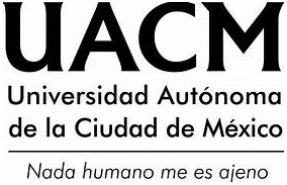ALTERNATIVE MEDIA AND INTERNET: A QUALITATIVE ANALYSIS OF SPANISH MEDIA
DOI:
https://doi.org/10.29092/uacm.v6i11.160Keywords:
Alternative media, alternative communication, internet, portal, spanish stateAbstract
Internet has changed the social structure. Consequently, media have changed, too. This article is focused on Spanish online alternative media. In the Information Society, Internet has become the gateway to spread different news that would have been excluded in the mainstream media. Moreover, Internet permits new organizational structures in the newsrooms. However, the main conclusion of this article is to highlight that there is not a single model and ideology for online alternative media in Spain. On the contrary, there are different models and ideologies.
Downloads
References
ALBERT, M. (1997), “What makes alternative media alternative?” Artículo en línea disponible en Zmag.org, 15 de abril de 2007.
BARÓ, J. y J. A. Ontalba (2001), Portals espanyols: massa productes per apocs clients? Barcelona: Universitat Oberta de Catalunya. Artículo en línea disponible en http://www.uoc.edu/web/cat/art/uoc/ 0107029/portals.html, 11 de noviembre de 2005.
BONFADELLI, H. (2002), “Internet and Knowladge Gaps. A Theoretical and Empirical Investigation”, en European Journal of Communication, vol. 17 (1). Londres: SAGE Publications, pp. 65-84.
CASTELLS, M. (2001), La galaxia Internet. Barcelona: Plaza & Janés. , et al. (2003), La societat xarxa a Catalunya. Barcelona: Universitat Oberta de Catalunya.
Centro de Reportes Alternativos sobre Guatemala (CERIGUA) (2003), El desafío de los medios de comunicación ante la complejidad de la sociedad guatemalteca. Guatemala: CERIGUA.
COLINA, C. E. (1996), “Sociología de las nuevas tecnologías de la comunicación”, en Anuario ININCO, núm. 5. Caracas: Universidad Central de Venezuela, pp. 47-81.
DOWNING, J. (2002), Mídia Radical. São Paulo: Senac.
FREIRE, P. (1977), Extensão ou Comunicação? Río de Janeiro: Paz e Terra.
FUNDACIÓN TELEFÓNICA (2006), Estudio sobre la sociedad de la información en España 2006. Madrid: Airel.
GRAJON, F. y D. Cardón (2003), “Can we free ourselves from media formats?”, en revista Mouvements, núm. 25. Paris: La Découverte, pp. 67-73.
GRAZIANO, M. (1980), “Para una definición alternativa de la comu- nicación”, en Anuario ININCO, núm. 1. Caracas: Universidad Central de Venezuela, pp. 71-74.
HAYTHORNTHWAITE, C. y Hagar, C.(2005), “The Social Worlds of the Web”, en Annual Review of Information Science and Technology, vol. 39, Nueva Jersey: American Society for Information Science, pp. 311-346.
JIMÉNEZ, A. (2001) “Estudi de la gestió documental de la informació en els serveis de valor afegit dels mitjans de comunicació a Internet: el cas de la premsa diària a l’estat espanyol. Barcelona: Consorci de Biblioteques Universitàries de Catalunya”. Artículo en línea disponible en http://www.tdx.cbuc.es/, 16 de noviembre de 2005.
MEEKER, M. (2005), Global Technology/Internet Trends. Stanford: Stanford Graduate School of Economics i Morgan Stanley.
MORAES, D. (organizador) (2003), Por uma outra comunicaçao. Mídia, mundializaçao cultural e poder. Rio de Janeiro: Record. MORAGAS, M. (1999), “The Olympic Movement and the Information Society.
New Internet Challanges and Opportunities. Lausanne: International Olympic Commttee”. Artículo en línea disponible en http://olympicstudies.uab.es/pdf/OD011_eng.pdf, 18 de noviembre de 2005.
------(2001), “Internet and the Olympic Movement. Cerdanyola del Vallès: Centre d’Estudis Olímpics”. Artículo en línea disponible en http://olympicstudies.uab.es/ pdf/OD012_eng.pdf, 15de noviembre de 2005.
-----, et. al. (2003), El impacto de Internet en los medios de comunicación y la industria del deporte. Cerdanyola del Vallès: CEO-UAB.
-----, et. al. (2005), “L’informe MacBride, vinc-i-cinc anys després. Context I contingut d’un debat inacabat”, en Quaderns del CAC, núm. 21. Barcelona: Consell de l’Audiovisual de Catalunya, pp. 5-13.
PERUZZO, C. (1998), Comunicaçao nos movimentos populares: a participaçao na construçao da cidadanania. Rio de Janeiro: Editora Vozes.
RHEINGOLD, H. (1996), La Comunidad Virtual: una sociedad sin fronteras. Barcelona: Gedisa.
SELWYN, N., S. Gorard, J. Furlong (2005), “Whose Internet is it Anyway? Exploring Adult’s (Non)Use of Internet in Everyday Life”, en European Journal of Communication, vol. 20 (1). Londres: Sage Publications, pp. 5-26.
SERRANO, P. (1996), “Una nueva forma de informarse, los medios alternativos” en Voltairenet.org. Artículo en línea disponible en http://www.voltairenet.org/article141379.html#article141379, 16 de abril de 2007.
SILLENCE, E. y C. Baber (2004), “Integrated Digital Communities: Combining Web-based Interaction with Text Messaging to Develop a System for Encouraging Group Communications and Competitions” en Interacting with Computers, vol. 13. Londres: Elsevier, pp. 93-113.
UNESCO. (1980), Un solo mundo, voces múltiples. Comunicación e información en nuestro tiempo. México: Fondo de Cultura Económica.
Published
Issue
Section
License
This Journal is licensed under Creative Commons Mexico 2.5. It is allowed to reproduce and disseminate the contents of the Journal for educational or research purposes, not for profit, as long as they are not mutilated and cite the source (Andamios, Revista de Investigación Social) and the author.
The copyright of the articles published in Andamios, Revista de Investigación Social are transferred by the author(s) to Universidad Autónoma de la Ciudad de México when the originals have been accepted, so that they are published and distributed both in the printed and electronic versions of the Journal. However, as established by law, the author(s) retains their moral rights. The author(s) will receive a form of assignment of copyright that they must to sign when their original has been accepted. In the case of collective articles, the signature of one of the authors will suffice, provided that the latter has obtained the consent of the others.
Authors may use the material of their article in other works or books published by themselves, with the condition of quoting Andamios as the original source of the texts.
The articles contained in this publication are the responsibility of their authors and do not compromise the official position of Andamios, Revista de Investigación Social of the Universidad Autónoma de la Ciudad de México.


